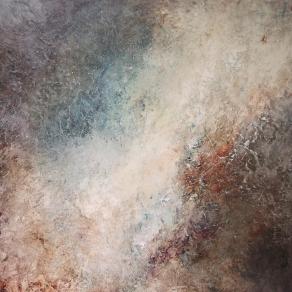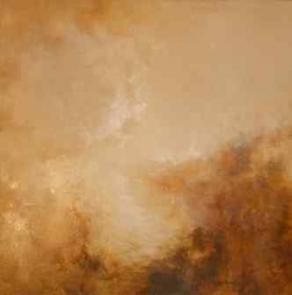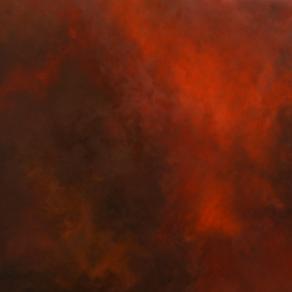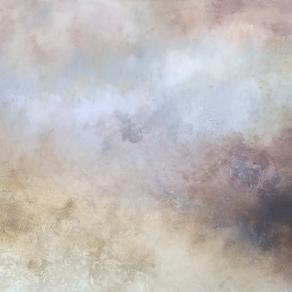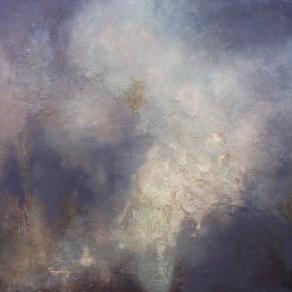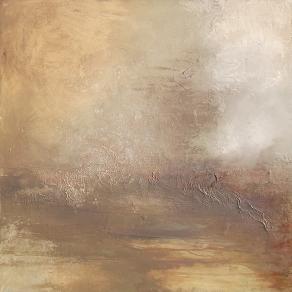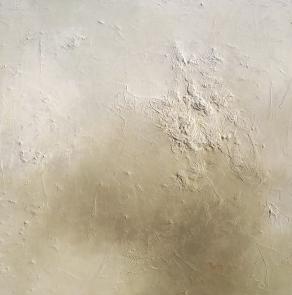de Toggenburg Cyre
Artista, Nevers, Francia, iscritta 12 anni fa
1. The postulate
Spirituality no longer carries a message, it is no longer only there to support this message, and it is no longer merely a support for the pictorial object.
Spirituality is the object of painting itself.
Spirituality is no longer at the service of painting.
It is painting that is at the service of Spirituality.
It is painting that becomes a support for Spirituality.
The object of my painting is spirituality.
We are no longer in the age of the "spiritual in art," but of the Spiritual Art.
Until now, we have seen that spirituality can take different forms (animistic, religious, institutional, sacred, dreamlike, magical, shamanic, mediumistic, spiritist) and that it could be practiced in any technique figurative, symbolic, abstract ...), but that it was always represented, or that it enriched the pictorial message.
Postulate of Spiritual Painting:
Now, it is no longer a question of being at the service of the painting, but rather of spirituality as a direct vector.
It is the action of the spirituality through me that arises directly on the canvas.
The object and the vehicle are spiritual. It is the state of satori, awakening, enlightenment, or shamanism that is transmitted on the canvas.
This state is not represented, it is.
I let it act through me, and by my gesture, it manifests itself on the canvas.
2. Implementation
What process?
Let us make an analogy with the other arts.
As, when a singer does not sing right, you can ear it, when a painting is not right, you see it. And the opposite is true.
What makes an actor playing right?
When he manages to create a consistency between his inner (what he puts in his heart), what his gestures manifest and what he says.
There is therefore coherence when the limbic, physical and intellectual communications are harmonized. This inspires greatness, and this state gives an extra span to the actor.
Why?
Perhaps because the vital energy is free, unhindered, fluid.
How to be fluid, how not to hinder the flow of this vital, spiritual energy?
It is like a torrent that must flow.
On a river, there are dams. I can either open or direct the flow.
Dam 1: the affect. Dam 2: the body. Barrage 3: the intellect.
If I remove the roadblocks, I am consistent.
When it follows its course unhindered, the vital energy will take on the colour of the moment and give it all its brilliance.
This vital energy is the force with which we can paint right.
Where does this vital energy come from?
I do not know, that's what I call spirituality, because this energy is available everywhere, all the time, even when you can not see anything possible, it's there, in the smallest plots of the universe.
If we allow ourselves to be crossed by this spirituality, it enriches us and makes us stronger.
If we block it, we become small again, a human with the simple strength of our body.
This unhindered vital energy gives a new equilibrium, a new force, a radiance, a particular organization ... It manifests something ordered according to criteria radically different from those of our intellect. This is unknown to us and yet familiar.
It manifests a new meaning, it brings together what we believe to be the opposite, it cancels opposites and is not part of a temporal dimension.
Going towards the knowledge of this vital energy, without creating dams...
Choose rather a conciliation, or reconciliation with this vital energy to allow an incarnation.
To incarnate, you have to orientate it through yourself, to make something of it, for it allows us to act.
Excellence is action or sublimation, action that gives this extra scope.
Harmony, Coherence, Incarnation, Action, Excellence.
For this spirituality, we need coherence and coincidence between all the elements that participate in the process of creation.
1. Mental Health.
2. Emotional and physical.
3. Technical.
4. Personal pathways.
5. Purpose.
THE FIRST RULE OF SPIRITUAL PAINTING:
We must always keep in mind that:
- If I think, I am my thought. If I run, I am my body. And if I am sad, I am my emotion.
Here is a poem that expresses this perfectly:
I look at the tree and think.
The leaves shudder at the rhythm of my thoughts.
A horse passes, nonchalant, elegant.
I am the leaf of the tree that looks…
1. The Mental dimension:
Harmony, Coherence, Incarnation, Action, Excellence.
The Mindfulness:
It is a concept that mainly derived from Buddhism, which we can find in different forms in all the major currents of spirituality and philosophy.
Mindfulness is the ability to observe what is happening in me or outside of me, and accept it as my reality, without making positive or negative judgments.
This ability has been described scientifically. Some researches show that a mindful person is more resilient, more able to live the present and to focus his attention on the activity in progress, more capable of a creativity, open to all the remarks that reach him, Stress, more prone to happiness and a sense of higher personal efficiency.
As long as we are in the intellectual ability, we are limited to the acquisition of knowledge.
If I do not know anything, I learn from what is.
"You must become the man you are. Do what you alone can do. Become unceasingly the one you are, be the master and the sculptor of yourself ". Friedrich Nietzsche
Place yourself in action and not in judgment. This assumes that there are no more benchmarks.
I do, I do not think.
NON-COGITO ERGO SUM. Or then NON-COGITO SED ETIAM ERGO SUM. (Unlike what Descartes says).
I paint so I am what is.
It is about stop thinking.
Meditation, prayer, gōng'àn (Koan) ... are different ways to achieve this.
I like the koans, which come from Chan, Zen Rinzaï. They show us the measures of the trust we can allow to our intelligence.
They bring the intellect to its breaking point, and take it to its own trap.
The breakpoint of the imagination lies in the constraint it imposes on itself.
Logic leads us to the absurd, or magical thinking...
In short, all systems of thought will be proven impotent under certain circumstances.
We should consider as good, all that move us away from our centre and extirpates us from our mind, intellectual and thoughtful.
So in this letting go, we have room for spirituality.
2. Emotional and physical dimension:
Harmony, Coherence, Incarnation, Action, Excellence.
My body is the cockpit of my emotions. That would require more development, but here I am, just to point out that when I feel something, it is my body that expresses it.
We are too often under the domination of our emotions.
They agitate us like puppets.
We often get them mixed up with our intuition, our gut.
And if there is confusion, it is at the benefit of affects, because we trust them.
When our emotions are painful, we want to appease them, and emerge from this bad feeling, from the disagreeable sensations that are manifested in our body. We are struggling against emotional suffering.
They can be of different natures: emotion or feeling. Feelings are the affects that connect us to others. Emotions belong to the register of affects that are turned towards us.
When we feel emotions, we have the feeling to exist.
But in order to respect the flow of spirituality, we have to extinguish our emotions.
How to shut down the emotions?
To do this, we must know the nature of the emotion itself, look at it, recognize it and accept it. An emotion is transient. If we resist to it, if we seek to escape it, it hurts us, it compels us and brings us back to it.
Let us imagine that wind is emotion, and we are a tree. If we strain to prevent the wind from passing, are we not going to bend, or break?
As if we allow the wind to pass through our foliage, it is not pleasant, certainly, but it only passes.
If I feel emotions, I am focused on these emotions. So I am those emotions. I exist.
But if I do not feel anything … although I still exist.
3. Technical aspects:
Harmony, Coherence, Incarnation, Action, Excellence.
To access the spirituality, we have to get rid of the mind rules. In that way, we will be able to find out the rules that are defined by this spiritual dimension, and free ourselves from the technical diktats, and break the rules of the art of:
- Geometrical composition or art of diagonals, lines and points of strength and centre, horizon of Charles VII, rule of thirds and door of harmony, rule of the 3 planes - Rule of perspectives by tone values or heat of the pigment, pigment work, colour blocked, colour value rule, saturation, interaction, complementarity, simultaneous contrast, pattern - Direction and value of light - invoice (knife, brush) - rhythm, movement.
To break the rules of art, you must first know them. Then you have to get rid of it.
You will tell me, why do we have to learn them in this case?
The learning of technique refines us, polishes us. It also allows us to glimpse a wealth of possibilities, sensations, and experiences.
But it is also by mastering perfectly the technique that I can surpass it. I can forget it.
The musicians know this difficulty. If I want to be able to express emotions in my music, my mind must not be attached to my dexterity, and to the anguish of my technical failure. On the other hand I possess perfectly my technique, then my mind is occupied with emotion.
Here we are not trying to reach emotions, but the process remains the same.
I do not have to wish to do like this or that, or get this or that. I must possess the knowledge in order not to be hindered from it.
The only technical rule is:
"To detach oneself from the fruit of the action, promotes the acquisition of mastery".
"It's always the impatience to win that make you lose." Louis XIV
Look for nothing! No motives, no line, no rhythm.
(Even more better, do not look for). But also be careful not to build, or reconstruct, or define, because otherwise one falls back into an intellectual hindrance.
A whole universe of possibilities is at our disposal as soon as we accept to paint according to the nature of this spirituality.
And we will find it if we accept to take some risks.
That occurs when you do without worrying about the rules, when you explore unknown areas and situations.
It has its own balance, and is revealed without our intervention. It is therefore necessary to seek the point of rupture (for example the chemical break-point of pigments).
4. Personal path:
Harmony, Coherence, Incarnation, Action, Excellence.
Looking for nothing, we consider the painter's action for itself.
There are two quotations from Jean Haines that are particularly appropriate.
« One can feel a sense of accomplishment not only by producing a painting, but also by the action of painting itself. » Jean Haines (Paint yourself calm)
« In painting, the action is as important as any finished masterpiece ». Jean Haines (Paint yourself calm)
Put yourself in action rather than in thought. This requires a lot of personal investment.
It is like a confusion between the artist and the art.
We only make art that resembles us.
Knowing the importance of the spiritual dimension, will allow it to appear in the guise of us, and will be incarnated on the canvas.
This cannot be a costume that could be endorsed and left; it cannot be something external of us. Otherwise we come back to references and reflexes that interfere with the painting.
It is a commitment that responds to an "inner necessity," a dear concept of Kandinsky.
When you do recognize the spiritual dimension in you, which is no longer intellectualized, and no longer emotional, nor physical, you focus on it to become the « object ».
Without these hindrances (emotional, physical, mental), the torrent of this spirituality springs through me and touches the canvas in the action of painting.
5. The object:
Harmony, Coherence, Incarnation, Action, Excellence.
The object of spiritual painting is spirituality itself.
This implies that we have been able to identify its nature and substance and that it can be born on the canvas as an end in itself.
I therefore claim ownership of my spirituality. It's mine. It exists in my freedom of action to paint a Spiritual Painting.
Using this methodology, we open the door to so many possibilities to explore this type of painting.
Isn’t it going through the gateless gate?
News
celeste,








